HISTORY
The history of Louis Vuitton, one of the most renowned luxury goods manufacturers in the world, began in the 19th century. In 1854, Louis Vuitton founded his company in Paris and dedicated himself to the production of exquisite luggage. The young visionary Louis Vuitton revolutionised travel by designing robust, handmade suitcases with flat bottoms that were perfect for the new rail and steamship travel. His monogram canvas became a symbol of elegance and ingenuity.
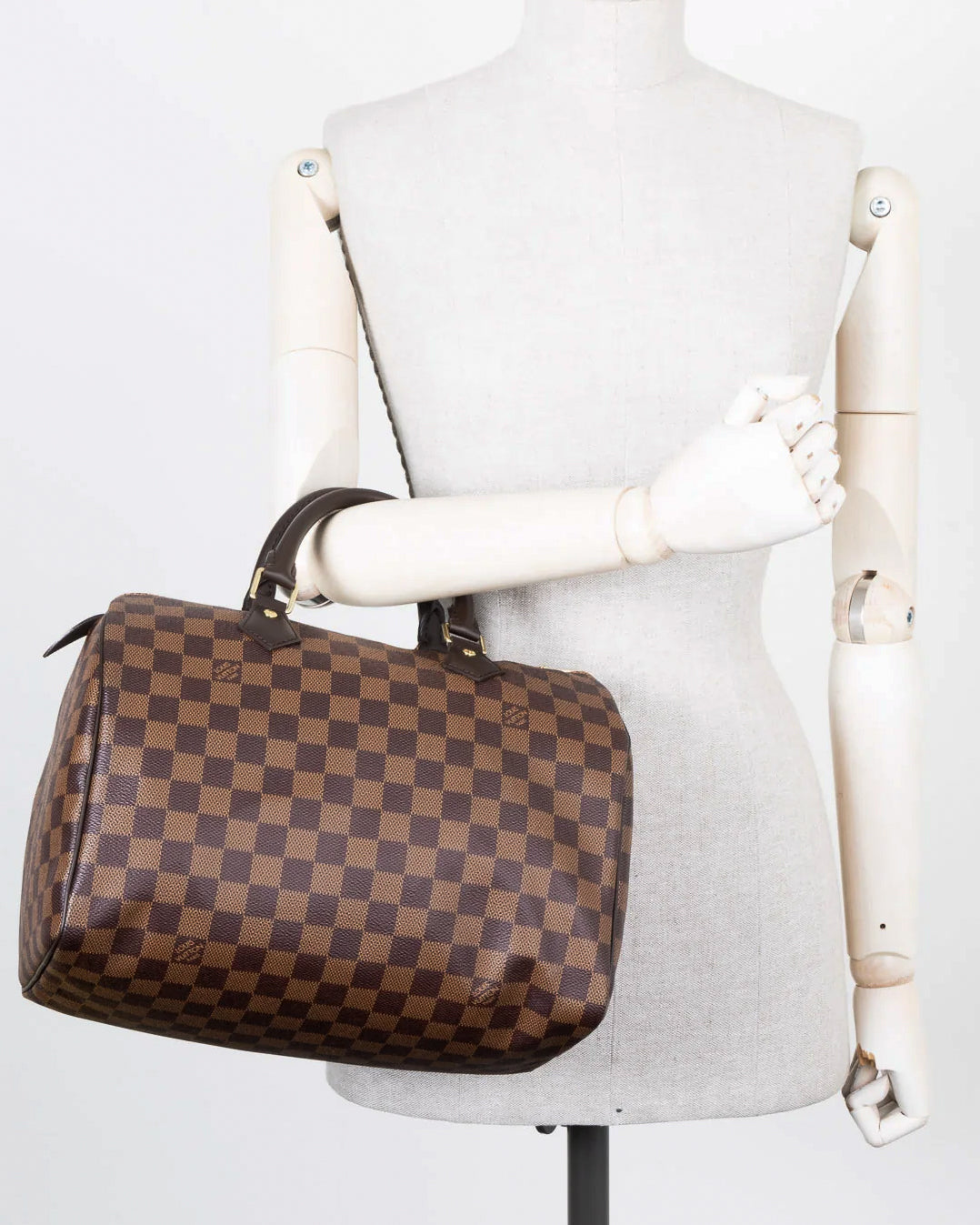
Speedy
Over the years, Louis Vuitton has become a symbol of elegance and luxury. Craftsmanship and attention to detail characterised the brand's success. It was in this context that the legendary Louis Vuitton "Speedy" handbag was created
The "Speedy" was first introduced in 1930 and quickly became a timeless classic. This handbag embodies the perfect blend of functionality and elegance. With its iconic monogram canvas and characteristic leather details, the "Speedy" exudes a touch of luxury.
The history of the "Speedy" is closely linked to the history of Louis Vuitton. Originally designed as one of the first handmade commissions for the then emerging travel wave, the bag was quickly adopted by celebrities and fashion icons worldwide. Over time, the "Speedy" was introduced in different sizes and materials to meet the varying needs of the discerning clientele.
Today, the "Speedy" remains a timeless accessory that combines style and functionality. Its history reflects not only the craftsmanship of Louis Vuitton, but also the evolution of travelling and fashion consciousness over the decades. The "Speedy" thus stands as a living testimony to the unrivalled tradition and innovation that have made Louis Vuitton synonymous with luxury.
The Noé
The Louis Vuitton Noé has a fascinating history and a unique origin. The bag was first designed in 1932 by Gaston-Louis Vuitton, the grandson of founder Louis Vuitton. The inspiration for the Noé came from the "need" to transport bottles of champagne safely.
The Noé was originally designed for the French champagne producer Moët & Chandon, who commissioned Louis Vuitton to create a bag that would allow five bottles of champagne to be transported upright without breaking. The characteristic shape of the Noé, with its conical design and drawstring top, is therefore not only aesthetically pleasing but also functional.
The bag quickly became a fashion accessory and enjoyed great popularity in the fashion world. In the decades that followed, the Noé was worn by various personalities, including many celebrities, and became a symbol of style.
The Noé has undergone various modifications over the years and is available in different sizes and materials. The characteristic bucket shape and the iconic monogram canvas continue to make it a coveted accessory among fashion lovers.
Today, the Louis Vuitton Noé remains a timeless bag that impresses not only with its elegant and functional design, but also with its fascinating history and its connection to well-known personalities from the world of fashion and film.
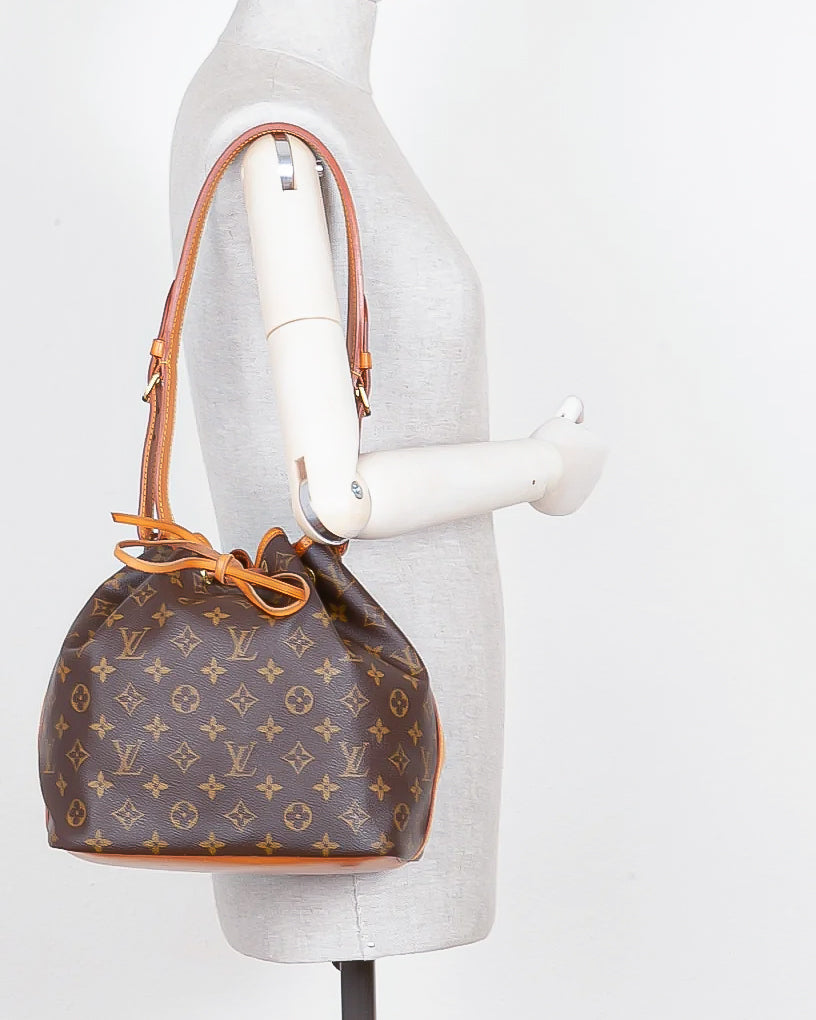
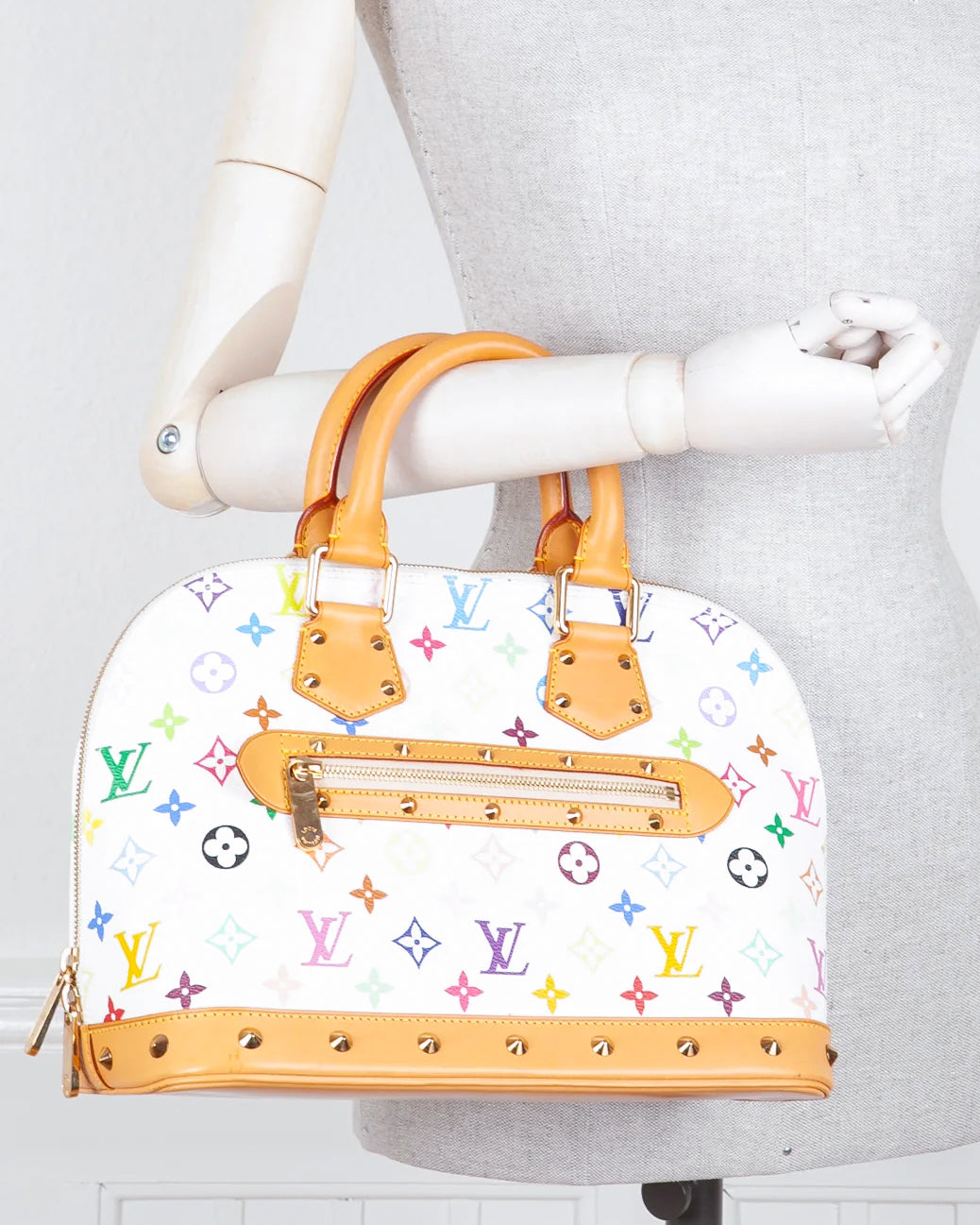
The Alma
The Louis Vuitton Alma handbag is another icon of the luxury label and has a rich history as well as an impressive presence in the fashion world. The Alma was first designed in 1934 by Gaston-Louis Vuitton, the founder's grandson. The origins of the bag are closely linked to the Paris Rive Gauche, where it was first presented as the "Squire Bag".
The Alma was designed for practical yet elegant use. Its characteristic feature is the rounded, structured shape, reminiscent of a classic piece of luggage. Designed to fulfil the needs of modern women while adding a touch of sophistication and elegance.
The Alma is available in a variety of sizes and materials, including the iconic Monogram canvas, Epi leather and Damier pattern. The structured silhouette and distinctive details such as the double zip and gold-coloured hardware contribute to its timeless design.
The Alma remains a sought-after handbag to this day and represents the perfect combination of functionality and style. Its timeless design and artistic craftsmanship make it a classic in the world of luxury accessories, epitomising the elegance and sophistication of Louis Vuitton.
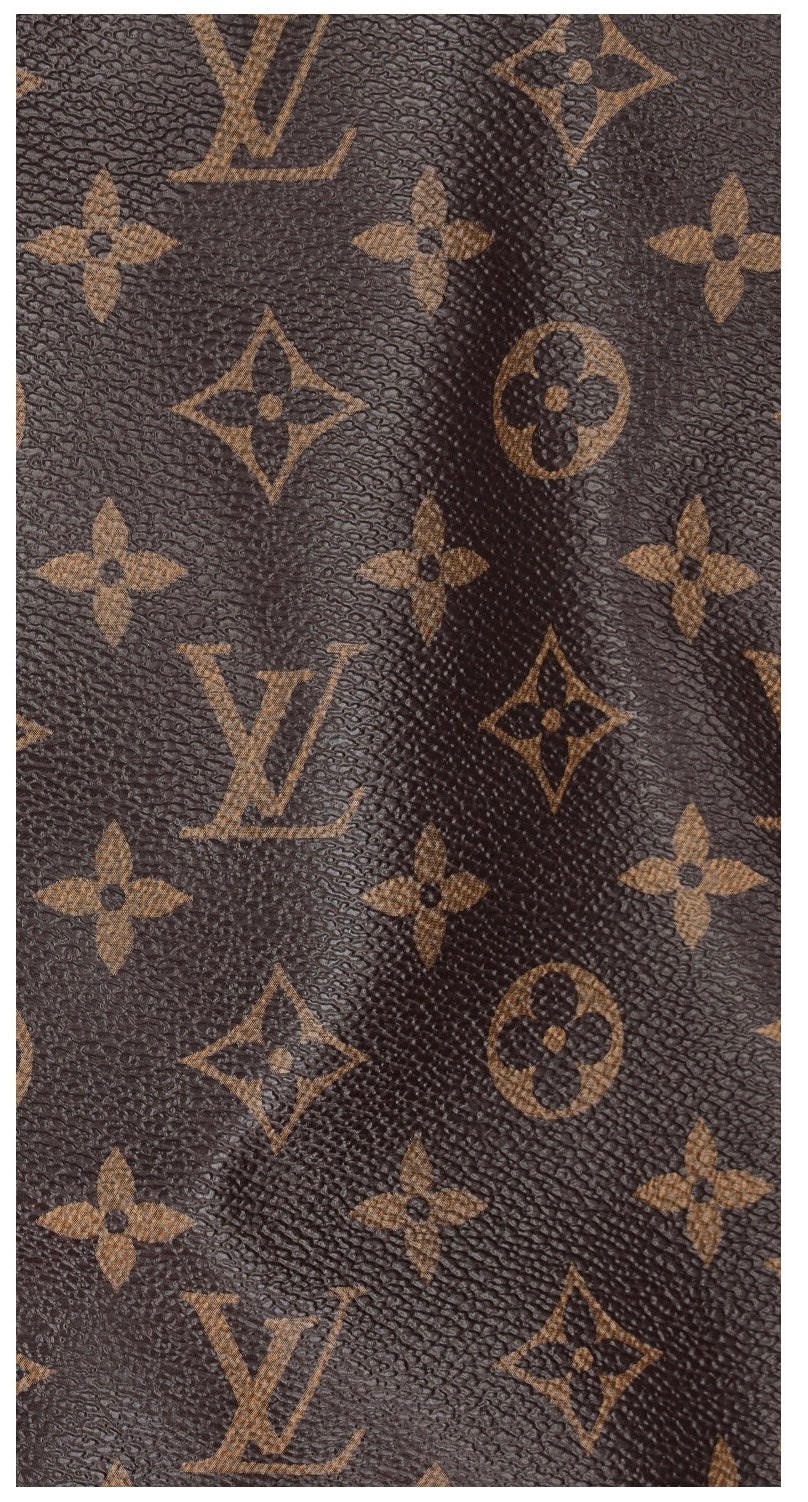
Monogram Canvas
The iconic Louis Vuitton Monogram Canvas, which is made of vinyl-coated linen, is characterised by a matt surface, high flexibility and light structure. In contrast, non-authentic canvas often has a shiny, rigid and rough material, usually made of plastic. A close look at the mustard yellow monogram line, which runs from bottom left to top right, is crucial. Authentic monograms are line-like. The symmetry of the monogram, especially at the seams, is another feature of genuine Louis Vuitton products, as the "LV" is not usually cut, unless it is unavoidable on asymmetrical bags such as the petit Bucket or the Sac Shopping.
On Louis Vuitton wallets or coloured EPI leather bags, the logo is either precise, punched or stamped. This marking is always centred, with no signs of bleeding edges or misalignment. The orientation of the "print" can vary slightly, both to the right and to the left. Details such as the font and alignment are individual, while the positioning remains centred.
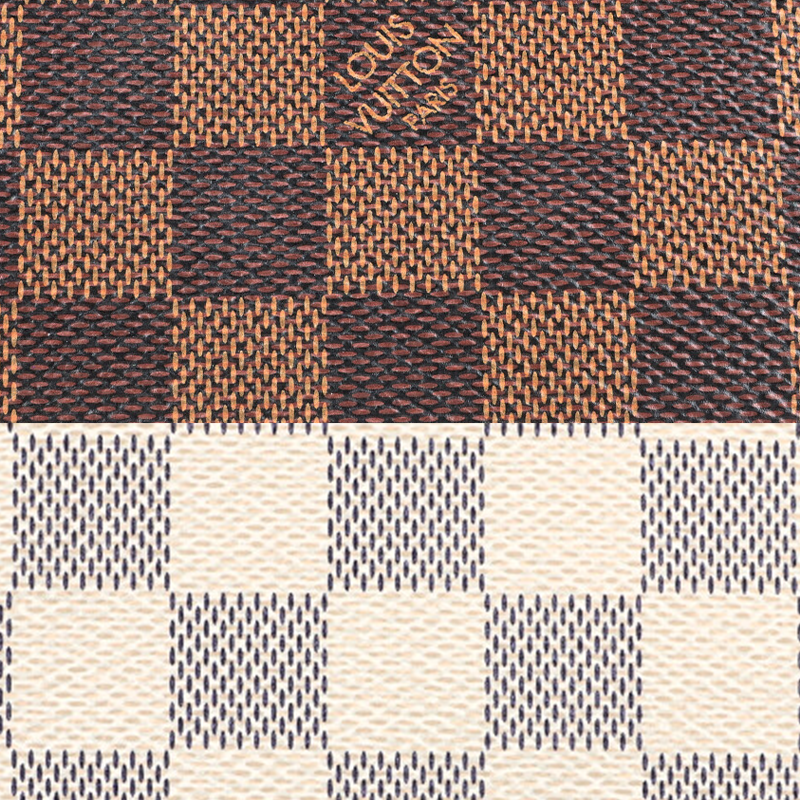
Damier Canvas
Das Damier-Canvas von Louis Vuitton entstand aus der Zusammenarbeit von Louis Vuitton und seinem Sohn Georges Vuitton im Jahr 1888, ein Jahr vor der Weltausstellung. Das Damier Muster war interessanterweise der Vorläufer vom Monogram Muster und ist von einem Schachbrett inspiriert (Damier heisst im Französischen Schachbrett). Im Jahr 1998 wurde das Design als Damier wieder eingeführt und ist seitdem ein grosser Erfolg für Louis Vuitton. Es wurden verschiedene Variationen des Damier-Musters entwickelt, darunter Damier Azur, Damier Graphite, Damier Infini und zuletzt Damier Adventure und Damier Challenge. Die Maison Louis Vuitton wird sicherlich auch in Zukunft neue Interpretationen des Canvas-Musters schaffen.
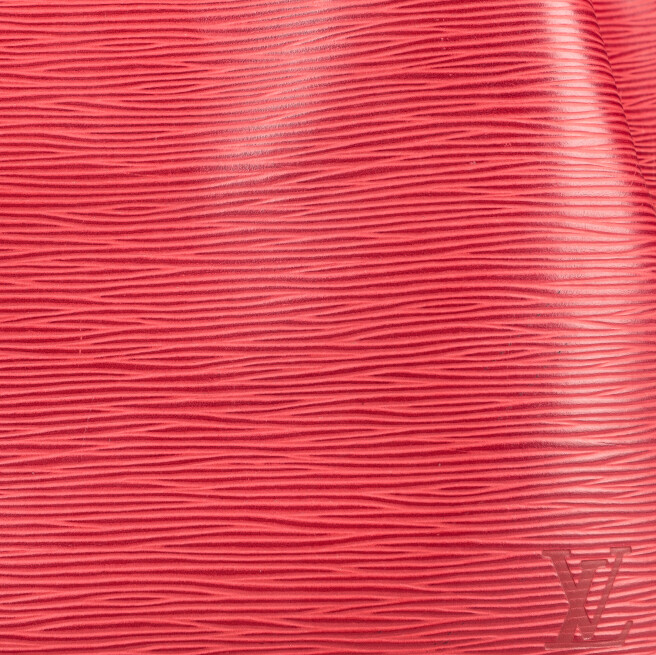
Epi Leather
The Louis Vuitton Epi leather is an important type of leather for the House and has been in existence for more than a century. Developed by Georges and Gaston Vuitton in 1920, it is inspired by the swaying wheat fields and has a unique relief pattern. As a pigmented smooth leather, it is timeless and weather-resistant, perfect for everyday use. Louis Vuitton's Epi leather is characterised by a distinctive embossed pattern consisting of diagonal lines. Make sure that the pattern on the handbag or accessory is evenly and precisely embossed. It is known for its high quality and durability and should feel firm and textured without being too stiff or too soft. Available in black or vibrant colours, it is exclusive to Louis Vuitton.
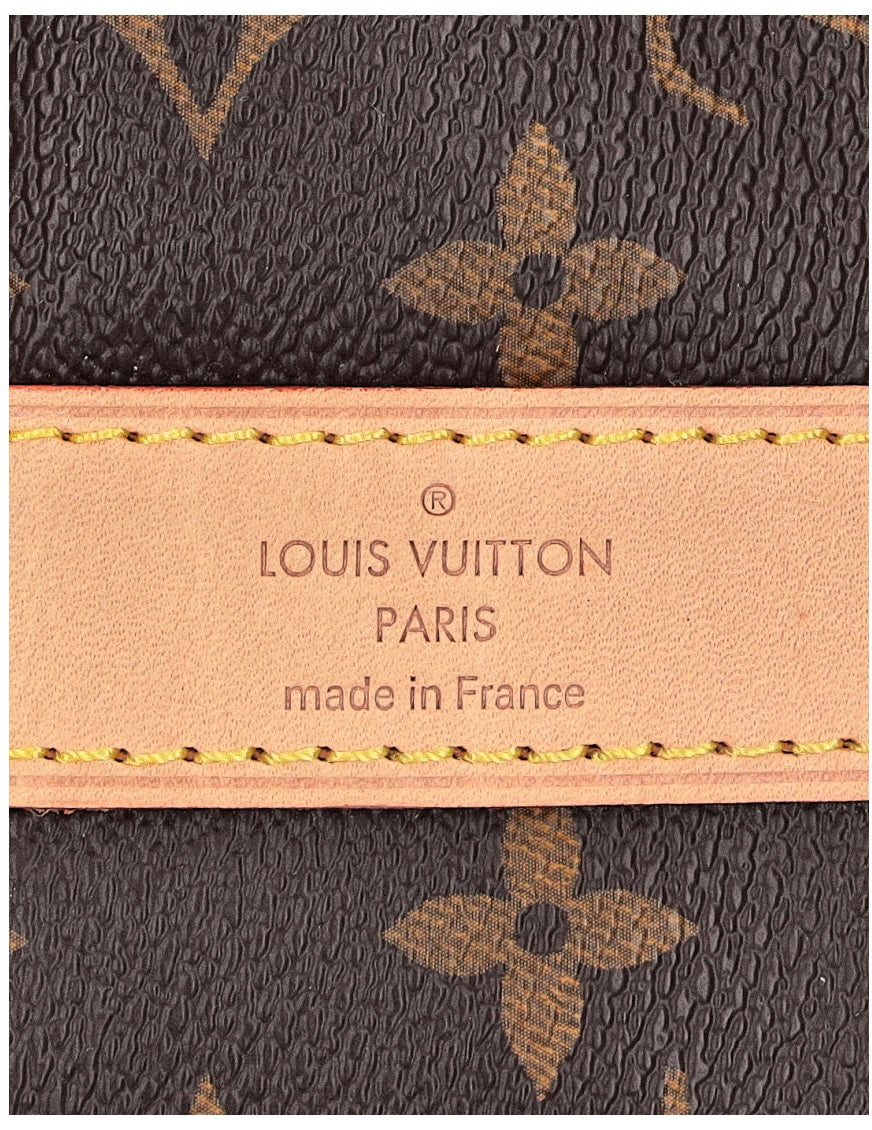
Logo
The characteristic logo stamp on Louis Vuitton bags is stamped directly into the leather using an embossing technique. It contains the unmistakable Louis Vuitton logo and the place of production. The placement of these stamps varies by bag model, with slight variations in design possible depending on the specific bag and time of production. It should be noted that older models may have different stamp features than newer ones.
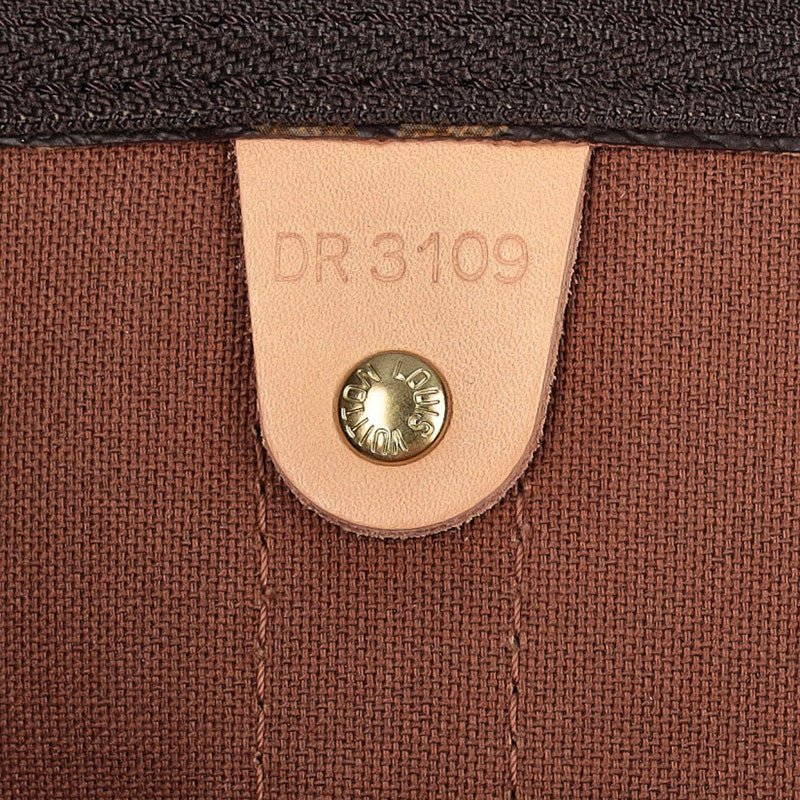
Date Codes
From 1982 to March 2021, Louis Vuitton used so-called data codes. Each bag has a data code. This is often either in a leather flap or discreetly stamped into the lining, which can make it difficult to find the code. It is important to emphasise that these date codes are not intended to legitimise authenticity. Rather, their main purpose is to identify the date and place of manufacture of the bag. The data code is not an individual serial number.
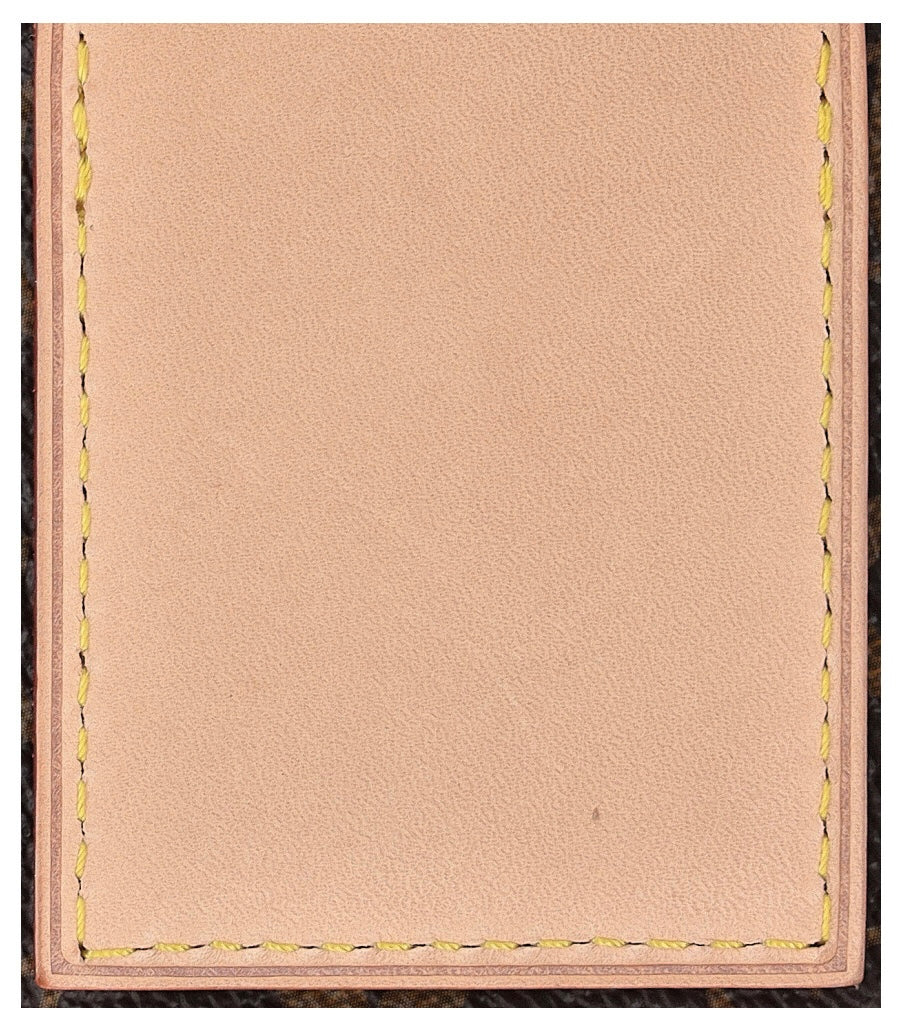
Stitching
The stitching on Louis Vuitton handbags is a distinctive feature of their authenticity. With Monogram canvas bags, the special mustard-yellow colour of the seams, which is created by beeswax, is a characteristic detail. Similarly, coloured models made from Epi leather are known for their tonal or black stitching. Authentic Louis Vuitton bags are characterised by flawless workmanship, without crooked seams, knotted threads or unclean labels. The precision and care taken during production also extend to the colour of the thread, which meets the brand's high quality standards and is matched to each bag model.
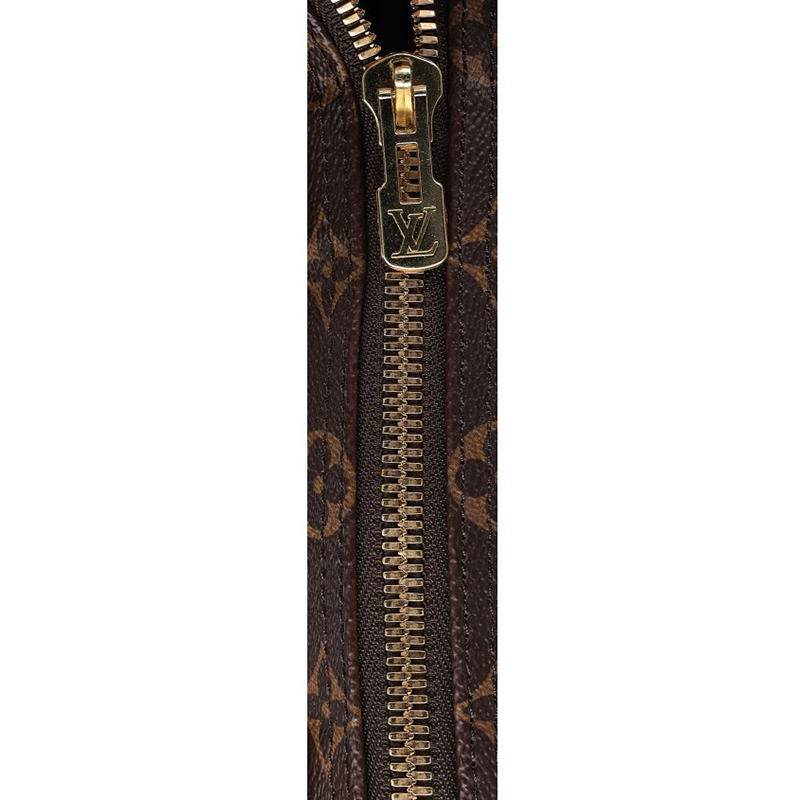
Hardware
The hardware of Louis Vuitton bags plays a crucial role in terms of design and functionality. Metal fittings, including locks, zips and other elements, are made of high-quality brass. The engravings often bear the characteristic Louis Vuitton logo.
The zips are robust and run smoothly, while rivets, rings and other metal parts are precisely and solidly finished. The colour of the hardware harmonises with the overall design of the bag, and irregularities are atypical. The quality of the material ensures durability and resistance to wear and tear.
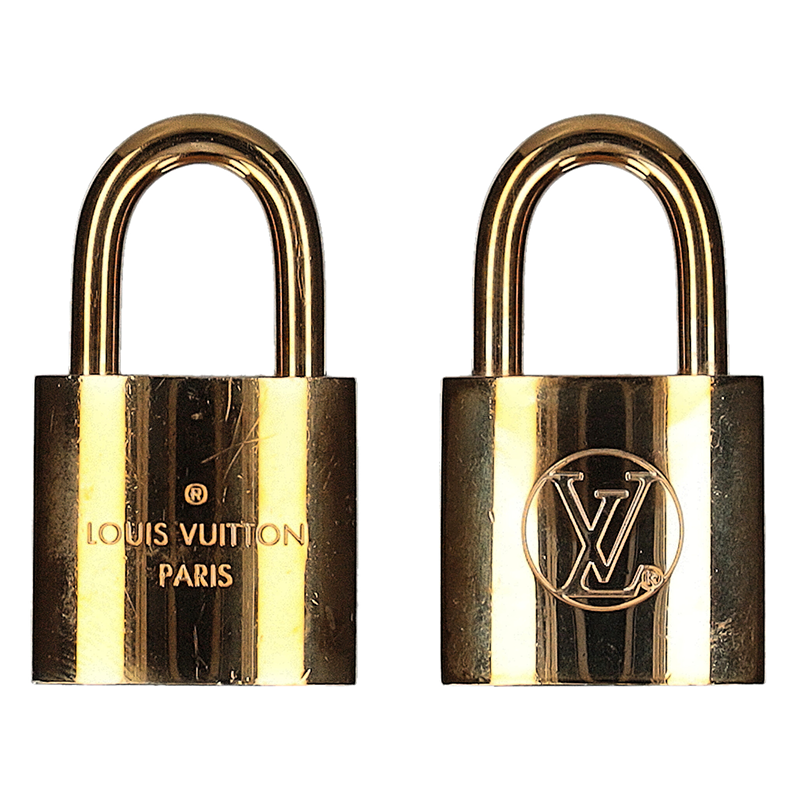
LV Padlock
The delicate padlock, which is often included as an accessory for the bags, bears the name Louis Vuitton Padlock. It is a filigree padlock designed to secure the zips or fasteners on the bags and provide a sense of security. Each lock comes with two small keys, the LV Keys, which are attached to the bag in an elegant leather key pouch. An identical number is engraved on both the keys and the lock to ensure unique identification.
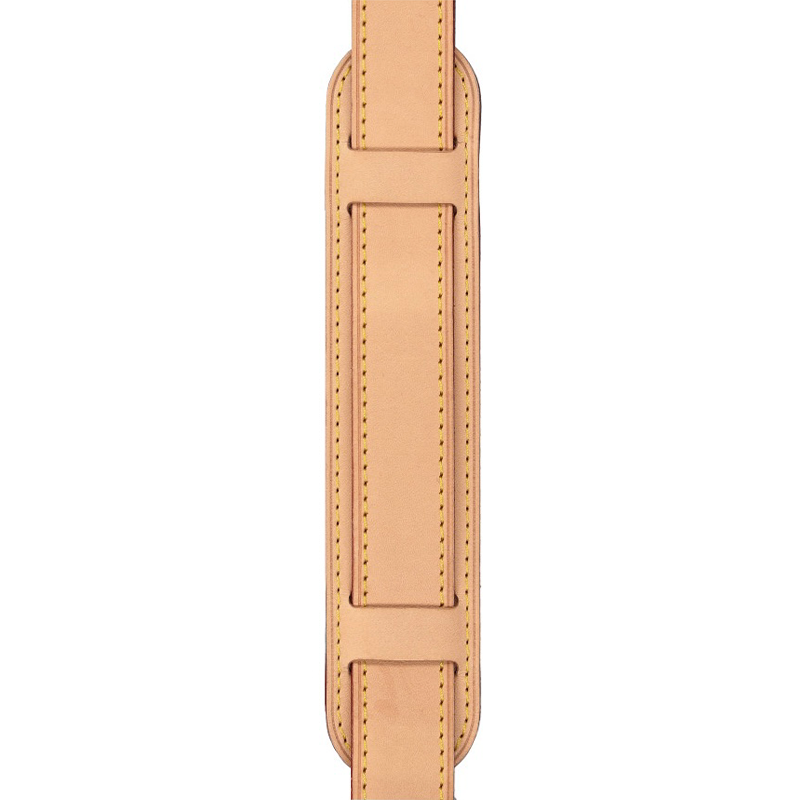
Leather Parts
The handles and leather parts of Louis Vuitton bags are made from untreated cowhide, which develops a characteristic patina through exposure to rain, sunlight and everyday use. This natural change in colour is a sure sign of authenticity. In contrast, counterfeits often have light-coloured leather parts or use sheepskin, which can be recognised by a strong smell. The ends and edges of the leather parts and the handles of genuine Louis Vuitton bags are coloured wine red, which adds a sophisticated accent.




